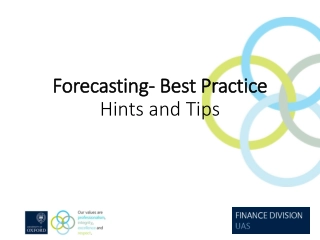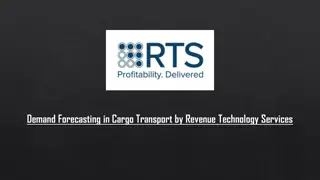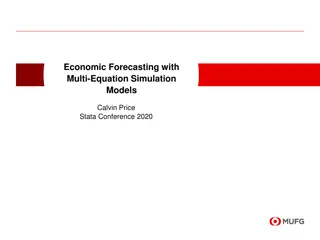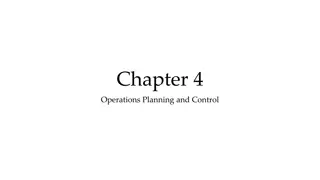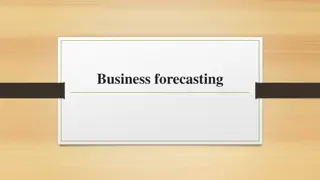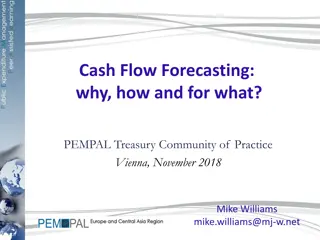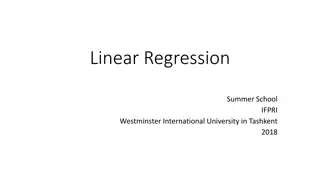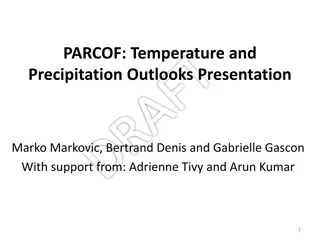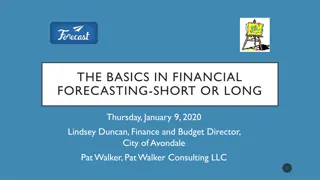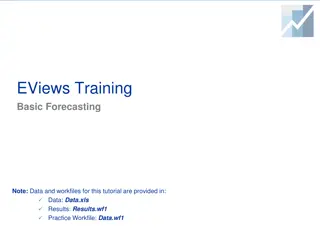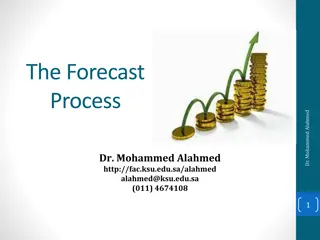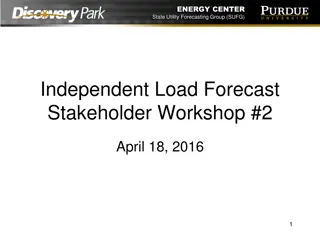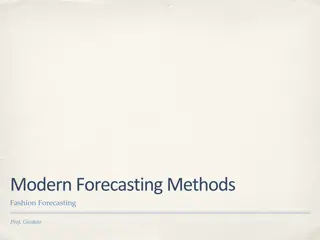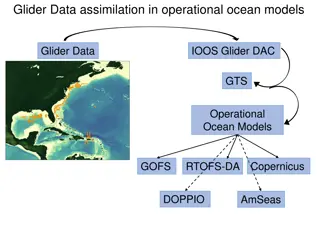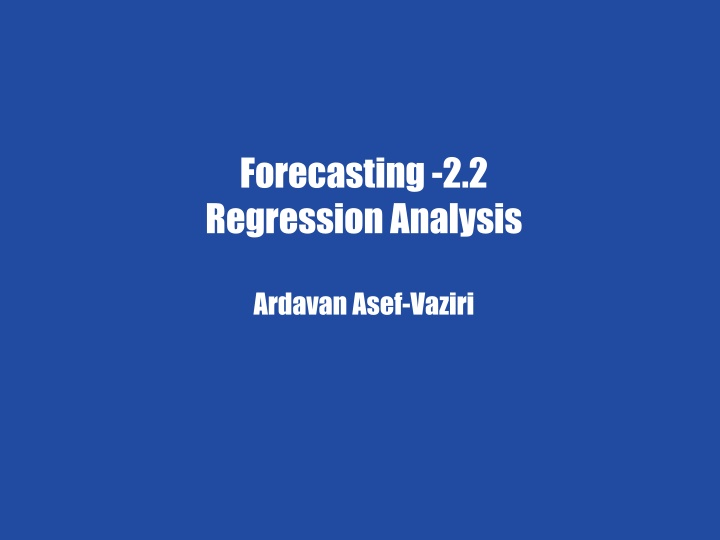
Demand Forecasting in a Supply Chain Using Regression Analysis
Explore the application of regression analysis for demand forecasting in a supply chain, focusing on the relationship between time and demand. Learn about associative (causal) forecasting through regression, multiple R-squared, coefficient of determination, and interpreting regression models. Discover tools and techniques for charting data and conducting data analysis in demand forecasting.
Download Presentation

Please find below an Image/Link to download the presentation.
The content on the website is provided AS IS for your information and personal use only. It may not be sold, licensed, or shared on other websites without obtaining consent from the author. If you encounter any issues during the download, it is possible that the publisher has removed the file from their server.
You are allowed to download the files provided on this website for personal or commercial use, subject to the condition that they are used lawfully. All files are the property of their respective owners.
The content on the website is provided AS IS for your information and personal use only. It may not be sold, licensed, or shared on other websites without obtaining consent from the author.
E N D
Presentation Transcript
Forecasting-2 Forecasting -2.2 Regression Analysis Ardavan Asef-Vaziri Chapter 7 Demand Forecasting in a Supply Chain Ardavan Asef-Vaziri 6/4/2009 Exponential Smoothing 1
Forecasting-2 Associative (Causal) Forecasting -Regression The primary method for associative forecasting is Regression Analysis. The relationship between a dependent variable and one or more independent variables. The independent variables are also referred to as predictor variables. We only discuss linear regression between two variables. We consider the relationship between the dependent variable (demand) and the independent variable (time). Ardavan Asef-Vaziri 6/4/2009 Exponential Smoothing 2
Forecasting-2 Regression Method = 0+ Ft b b t Computed relationship 1 50 40 30 20 10 0 0 5 10 15 20 25 Least Squares Line minimizes sum of squared deviations around the line Ardavan Asef-Vaziri 6/4/2009 Exponential Smoothing 3
Forecasting-2 Multiple R R Square Adjusted R Square Standard Error Observations 0.92 Correlation Coefficient (-1 and +1) we want it close to +1 0.84 Coefficient of Determination: Large (0 to 1) we want close to 1 0.82 To know if the line had + or - slope we look at X Varaible 1 or Multiple R 4.07 Standard Error is the standard deviation of our forecast 12 Something similar to 1.25MAD ANOVA df SS MS F Significance F 2.74837E-05 Regression Residual Total 1 873.0 165.9 1038.9 873.0 16.6 52.61 10 11 Coefficients Standard Error 5.06 1.59 t Stat P-value Lower 95% -0.926808842 11.04696388 1.103651983 2.082394529 Upper 95% Intercept X Variable 1 2.686944916 1.883208505 0.089052275 0.219632305 7.253137252 2.74837E-05 We want is less that .05 Y=5.06+1.59t Ardavan Asef-Vaziri 6/4/2009 Exponential Smoothing 4
Forecasting-2 Regression: Chart the Data Period 1 2 3 4 5 6 7 8 9 10 Demand 117 126 210 222 262 310 278 338 379 388 Demand 450 400 350 300 250 Demand 200 150 100 50 0 0 2 4 6 8 10 12 Ardavan Asef-Vaziri 6/4/2009 Exponential Smoothing 5
Forecasting-2 Regression: The Same as Solver but This Time Data Analysis Ardavan Asef-Vaziri 6/4/2009 Exponential Smoothing 6
Forecasting-2 Data/Data Analysis/ Regression Ardavan Asef-Vaziri 6/4/2009 Exponential Smoothing 7
Forecasting-2 Regression: Tools / Data Analysis / Regression Ardavan Asef-Vaziri 6/4/2009 Exponential Smoothing 8
Forecasting-2 Regression Output SUMMARY OUTPUT Regression Statistics Multiple R R Square Adjusted R Square Standard Error Observations Correlation Coefficient + . Close to + 1 Coefficient of Determination Close to 1 Standard Deviation of Forecast 0.98 0.95 0.95 22.21 10 If the first period is 1, next period is 10+1 = 11 ANOVA df 1 8 9 SS MS 77771 493 F Significance F 1.51524E-06 Regression Residual Total 77771 3945 81716 158 Coefficients 94.13 30.70 Standard Error 15.17 2.44 t Stat 6.21 12.56 P-value 0.000258 0.000002 Lower 95% 59.15 25.07 Upper 95% 129.12 36.34 Intercept X Variable 1 P-value less than 0.05 Ardavan Asef-Vaziri 6/4/2009 Exponential Smoothing 9
Forecasting-2 Regression Output SUMMARY OUTPUT Regression Statistics Multiple R R Square Adjusted R Square Standard Error Observations 0.98 0.95 0.95 22.21 10 ANOVA df 1 8 9 SS MS 77771 493 F Significance F 1.51524E-06 Regression Residual Total 77771 3945 81716 158 Coefficients 94.13 30.70 Standard Error 15.17 2.44 t Stat 6.21 12.56 P-value 0.000258 0.000002 Lower 95% 59.15 25.07 Upper 95% 129.12 36.34 Intercept X Variable 1 Ft = 94.13 +30.71t What is your forecast for the next period. F11 = 94.13 +30.71(11) = 431.7 Mean Forecast = 431.7, Standard Deviation of Forecast = 22.21 Ardavan Asef-Vaziri 6/4/2009 Exponential Smoothing 10

